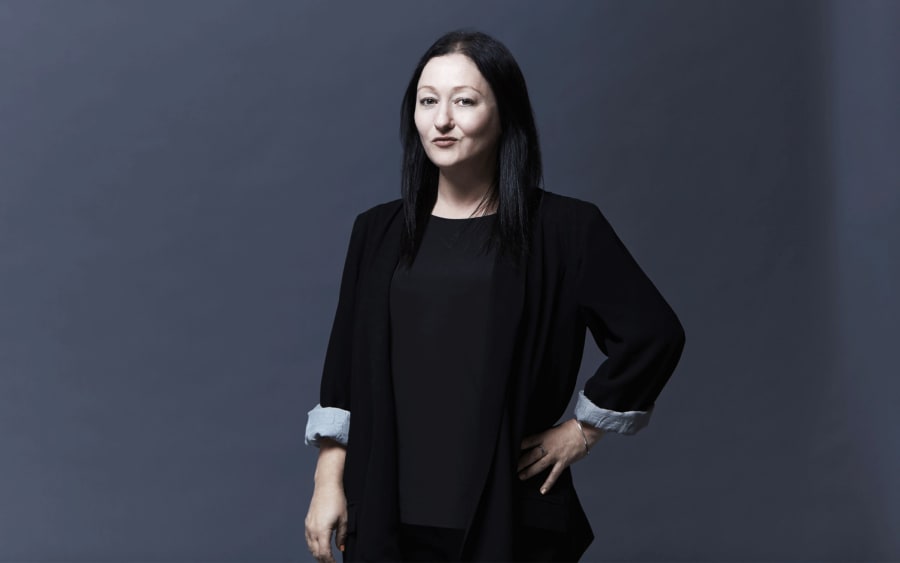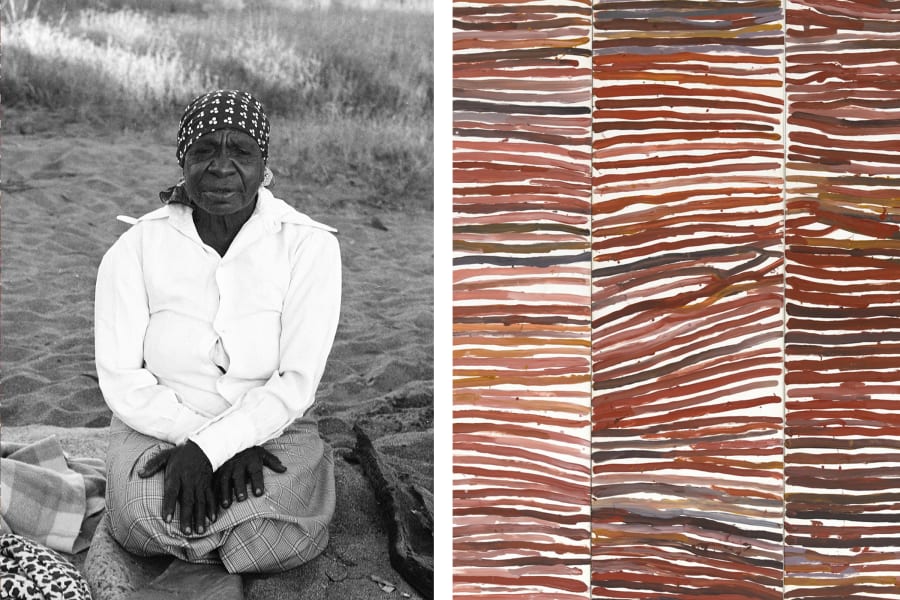‘STOP THE BOATS!’ More than a decade ago, this catchy slogan led right-wing Australian politician Tony Abbott to the electoral victory that made him Prime Minister. In a country shaped by the history of immigration, his premiership heralded the implementation of the controversial Operation Sovereign Borders, which aimed at preventing the arrival of asylum-seekers by sea. While numbers did drop, the backlash was bruising: The UN argued that the treatment of the apprehended refugees in detention camps amounted to torture, and Australia was accused of falling foul of international law. This didn’t stymie the campaign’s lasting influence, though. As recently as last year, it was reprised virtually wholesale by British Prime Minister Rishi Sunak. Its brutal simplicity has only gained traction in an increasingly polarized political landscape.
‘STOP THE BOATS’ is also the starting point for the latest project by Lagos- and Berlin-based artist Emeka Ogboh. Boats (2024) is one of the highlights of Mona Foma, the summer festival of Tasmania’s Museum of Old and New Art, and it will launch on February 15 with a sharing feast. Including an exhibition and a culinary experience, the project is centered around the release of a new drink, a gin, infused with Nigerian and Tasmanian botanicals and produced in collaboration with local distillers Taylor & Smith. Ogboh has long been refining the genre of drink manufacture as a politically charged artistic statement. The beers he’s co-produced, with brewers from Marseille to Houston, activate a sense which is fundamental in the transmission of any cultural heritage – taste – and act as a vessel for his sophisticated storytelling. Informed by rigorous research into local communities, these projects have tackled important questions around visibility, migration, and creolization. The gin part, though, is a first.
For the fourth installment of our ‘Artist As’ series – which profiles practitioners operating beyond the traditional confines of the visual arts – I asked Ogboh about the origins of the project, alcohol as a medium, and why, after years of brewing, he’s finally turned his hand to distilling.
How did Boats come about?
This project draws on the controversial ‘STOP THE BOATS’ campaign by former Australian Prime Minister Tony Abbott; it reflects on its impact on collective memory – in Tasmania and beyond. Like my ‘Sufferhead Beer’ projects [2015–ongoing], Boats explores themes of migration, but this time through a unique gin crafted in collaboration with local distillers Taylor & Smith. The packaging for the gin – a blend of Tasmanian and West African botanicals – features nsibidi symbols (an ancient system of graphic communication from Nigeria) and newspaper-style wrapping printed with articles about immigration in Australia. The project also includes billboard advertisements, a multichannel sound installation, and, in collaboration with Mona’s executive chef, Vince Trim, a culinary experience which, like the gin, combines Tasmanian and West African flavors.
How aware were you of the stories that informed the project when you started?
For Boats, as for most of my works, I spent a lot of time on location immersed in the local communities – especially those from immigrant and refugee backgrounds. I visited immigration centers, local businesses, and connected personally with individuals. Their stories of resettlement in Tasmania were not just informative but deeply moving. The idea wasn’t merely to be aware of these narratives but to truly understand and empathize with them. I also worked closely with Australian curators Ineke Dane and Emma Pike from Mona. Their expertise and insightful feedback were pivotal in aligning the project with the intricate nuances of Australian migration stories.
Is this your first gin?
Yes, a milestone!
Why did gin make more sense here than a beer (which has previously been your tipple of choice)?
The idea of collaborating with Tasmanian distillers first came during a memorable breakfast of fresh oysters and local gin at the Salamanca Market in Hobart. The prominence of gin in the local market and culture provided an exciting entry point. Unlike beer, gin offers a vast taste canvas to play with: its ability to preserve and accentuate diverse flavors is incomparable. The fermentation process in beer can alter or limit flavor profiles, whereas gin maintains the integrity of botanical infusions, allowing for a more expansive and experimental approach.
How do you develop a drink project?
It always starts with in-depth research. Given that my work often intertwines with themes of migration – and is closely linked to the identity and history of a specific place – I dive into its different aspects, especially the relationship between food and the migrant experience. This involves collecting a wide range of data – including immigrant population statistics and historical insights – and direct community engagement through interviews and surveys. I then analyze this data to identify recurring themes or keywords. These form the basis of my flavor profile. But this process isn’t just about numbers or abstract data; it’s about understanding the collective palate and experiences of a community. Working with a skilled brewmaster or distiller, I then use these insights to craft a distinct recipe. Ultimately, each drink project is a journey through the universal language of flavors.
Can you come back on your first drink project? How did it come about?
My journey into craft beers began with Sufferhead Original, which I conceived in 2015 for my ‘No Food for Lazy Man’ exhibition at Galerie Wedding in Berlin. I wanted to create something unique for the exhibition opening. The concept was born out of my own expatriate experience in Germany – as well as my growing fascination with the craft beer scene. Vagabund Brauerei, a local Berlin brewery, was central to kicking things off. What began as casual visits to their bar evolved into a collaborative venture. When I proposed brewing a beer for the exhibition, they were immediately on board. Sufferhead Original was first served on tap at the exhibition. It was really well received, which convinced me that I could bring the story of migration to life through craft beer.
What did you learn doing it? What was your biggest surprise?
The most significant thing I learned was the intricacy of infusing a conceptual theme into taste profiling and recipe development. This project was an exploration in linking various elements – flavors, ingredients, even the name – to the overarching theme of my exhibition. It was an enlightening process, revealing the subtle yet profound connections between art and taste. It fundamentally transformed my perspective on art production, challenging me to transcend traditional boundaries and conceive of art as a multi-sensory, immersive experience. It unveiled a new realm where storytelling could be integrated into product design, allowing a beverage to serve as a narrative medium. But perhaps the most surprising realization was that a concept deeply rooted in art could be actualized into a tangible product like beer.
How do you work with the artisans who produce the drink?
It always begins with forging a strong relationship with the brewer or distiller. I first try to get to know them, exploring their interests and the types of beer or spirits they are passionate about. Since not all brewers or distillers are open to deviating from traditional methods, finding those who share an enthusiasm for pushing boundaries is crucial. Once we establish common ground, we dive into the technical aspects, like recipe design and test brewing. It’s a process of co-creation, often requiring several rounds of brewing, tweaking – and tasting! – before the product meets our collective vision.
What can an artist bring to beverage production?
An artist brings not just creativity but a holistic vision, turning a beverage project into a multidimensional artistic experience. Beyond the production of the drink itself, the artist is instrumental in the product design and advertising phases. Crafting a campaign that captures the concept of the project allows for artistic expression through various media, from billboard design to television commercial. The artist’s involvement ensures that the product is not just a beverage but a narrative piece.
What do you think you can communicate through a drink that you can’t via a more traditional art form?
Traditional art forms predominantly engage with audiences on a visual level, which, while powerful, can sometimes fall short in conveying the full spectrum of an artistic concept. When exploring themes like migration, relying solely on visual representations might not fully capture the essence of the experience. This is where a beverage can be a more effective medium. It provides a direct, experiential way to engage with the audience, allowing them to literally ‘taste’ a concept like spiciness, which is integral to the cooking traditions that many migrants carry with them. And creating a beverage is just the beginning. It’s a foundation upon which traditional art forms can be integrated. When ‘marketing’ a beverage, there’s an opportunity to engage other senses like sight, sound, smell, and touch. The advertising campaign itself can evolve into an immersive exhibition, combining elements of visual art, soundscapes, aromas, and tactile encounters. It’s not just about presenting an idea but about creating an environment where the audience can experience and interact with the concept on multiple levels. In this way, a drink becomes more than just a beverage; it’s a conduit for storytelling.
More generally, do you feel that the non-visual senses are underused by artists?
Yes, I believe that taste and the other non-visual senses are significantly underutilized in the art world, despite their omnipresence in our daily lives. Traditionally, we have been conditioned to perceive art predominantly as a visual feast but, in truth, it should be a reflection of life in all its dimensions. Limiting art to a solely visual experience undermines the richness and diversity of human perception. This is a reality largely driven by the art world, which tends to favor visually striking – and consequently more marketable – artworks. However, the art world is gradually evolving, exploring, and acknowledging the potential of these other sensory elements. I foresee a shift when artists will increasingly embrace the full spectrum of sensory experience in their work.
Do you see your beverages as art? Does the distinction matter?
I certainly hope that the audience recognizes and appreciates the artistic effort and concept underlying each of my projects, but the most vital aspect for me is the creation of something that people can connect to. Whether my work is seen through the lens of art or simply as a delightful experience, its success lies in its ability to engage and resonate with people.
What are your aspirations for Boats?
At the Mona Foma festival, I hope the work will spark meaningful conversations about migration and immigration laws in Australia. But, ultimately, I would love this project to extend its influence into the realm of policy and national discourse. If Boats could act as a catalyst for parliamentary discussions on immigration, contributing to a broader societal and political dialogue, then it would surpass my expectations.
Coline Milliard is Art Basel’s Executive Editor.
Full-bleed images: 1. Emeka Ogboh, Sufferhead Original – Berlin Postcolonial, 2018. © the artist / Nti. 2. Installation Sufferhead Original - Munich Edition by Emeka Ogboh on the Kunstinsel at Lenbachplatz, 2019. © NS-Dokumentationszentrum Munchen. Photo: Connoly Weber. 3. Emeka Ogbohin, Sufferhard Original, 2017. Courtesy the artist.


